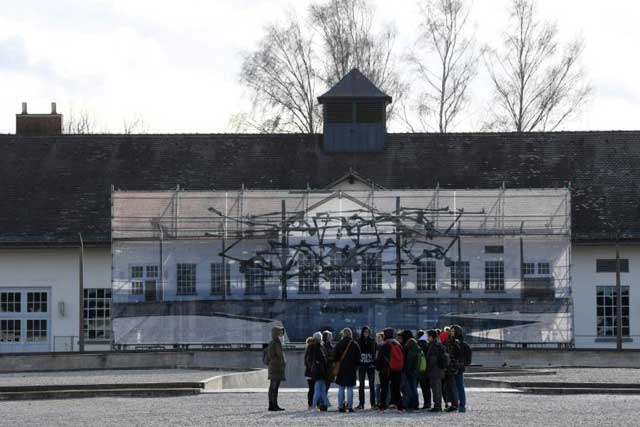
Munich, Germany | AFP | Jean Boehme still remembers the number of the Nazi concentration camp block where he lived as a child: 31C.
He went to school in block 33, and recalls that a nearby watchtower was transformed into a makeshift bistro.
Boehme, now 73, grew up on the site of Dachau, the concentration camp just outside Munich which was liberated 75 years ago on Wednesday.
Although it remains a less well-known story of the Holocaust, Dachau was one of several Nazi camps which were repurposed after the war.
Faced with a housing shortage elsewhere, the Allied forces and later the new West German government transformed them into barracks and temporary accommodation.
The son of a French woman and a German soldier who had been stationed in France, Boehme was around five years old when he moved into his new home in Dachau, he told AFP.
His father, who had returned home after Germany’s defeat in World War II, persuaded Jean’s mother to join him in the town of Dachau with their two sons.
“What a shock it was for my mother when she arrived and realised we were going to live in a former concentration camp!” Boehme sighed.
– German refugees –
Housing was scarce in post-war Germany, where many towns had been partially destroyed.
The former camp at Dachau, which was built in 1933 and served as a model for all the other concentration camps in Europe, was put to use by the local Bavarian government.
It provided temporary housing for refugees, primarily for Germans who had been forced out of territories in eastern Europe following the defeat of the Third Reich, but also for special cases such as Jean Boehme’s family.
According to the Dachau memorial centre, around 2,300 people lived in the former camp between 1948 and 1965.
“In the beginning, we shared one room, but later we got two rooms,” Boehme told AFP.
The family rarely left the site, which was almost self-sufficient.
“There was a school, a bakery, a grocery, a bar, a doctor, a tannery to provide people with work, a Catholic and a Protestant church. There was even a brothel!” Boehme said.
He and his brother hated school, but spent long hours playing with other refugee children between the camp buildings.
“We just didn’t realise,” he said.
One carefully kept photograph shows Boehme as a child next to one of the lodgings, a shy smile on his face and a dog at his side. Behind him, laundry airs on a wire strung between two buildings.
In another picture, he is sat next to a decorated pine tree — his “first Christmas in Germany”.
– ‘No right to live here’ –
Only his mother grasped the gravity of the situation, Boehme said.
“She repeatedly told my father that we had no right to live here, in a former concentration camp.”
Yet the family spent around three years on the site of the camp.
“We were very happy to leave,” said Boehme, who nonetheless went on to live for many years in the town of Dachau.
“When I had visitors, I would take them to see the camp. It was inescapable. I wanted them to see what happened, what this country was capable of.”
Boehme still thinks about his childhood, especially when he reads articles about modern refugees who have recently arrived in Germany.
“When you have to live in crowded conditions where there is not much space, there are always going to be conflicts,” he said.
“That was the case in Dachau, and it is still the case in today’s refugee centres.”
“There is not much left” of his childhood home in Dachau today, Boehme said, though the memories and the trauma remain.
“My mother never recovered from it. She was never happy here. It haunted her until she died,” he said.
 The Independent Uganda: You get the Truth we Pay the Price
The Independent Uganda: You get the Truth we Pay the Price



